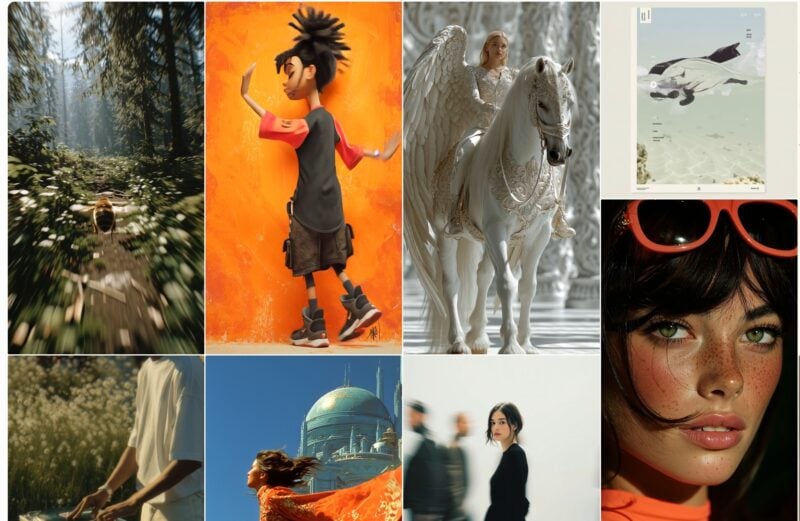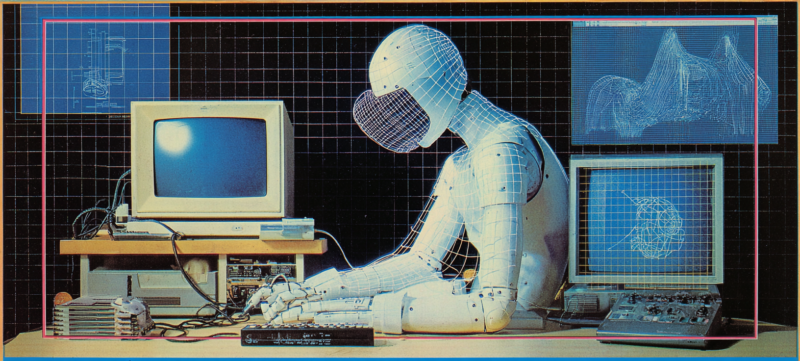AI Won’t Replace Designers But It Will Redefine Design
This page may contain links from our sponsors. Here’s how we make money.
The notification pings. Another AI tool promises to “generate stunning designs in seconds.” The headlines scream about automation replacing creative jobs. And somewhere, a designer stares at their screen, wondering if their carefully honed skills will become obsolete in the age of artificial intelligence.
I get it. The fear is real, and it’s spreading through design communities faster than the latest Figma update. But after watching this transformation unfold — and experimenting with dozens of AI design tools myself — I’m convinced we’re asking the wrong question. Instead of “Will AI replace designers?” we should be asking “How will AI redefine what it means to be a designer?”
The answer might surprise you. AI won’t eliminate designers any more than Photoshop eliminated illustrators or Figma eliminated the need for design thinking. Instead, it’s ushering in the most exciting evolution in design practice since the shift from print to digital.
The Tool Evolution That Got Us Here
Design has always been shaped by its tools. In the 1990s, the transition from paste-up boards and phototypesetting to desktop publishing didn’t destroy graphic design — it democratized it. Suddenly, designers could iterate faster, experiment more freely, and focus on concepts rather than technical execution.
The same pattern repeated with each major tool shift. When Sketch emerged, it didn’t replace designers; it made interface design more accessible and collaborative. Figma’s real-time collaboration features didn’t eliminate the need for design expertise; they made design thinking more visible and inclusive across entire product teams.
Each tool evolution followed a predictable arc: initial resistance, gradual adoption, then widespread integration that ultimately elevated the profession. The designers who embraced these changes didn’t just survive — they thrived by focusing on higher-level strategic thinking while the tools handled the mechanical tasks.
AI represents the next step in this evolution, not a break from it.
What AI Actually Does Well (And Where It Falls Short)

Let’s be honest about AI’s current capabilities. Modern AI design tools excel at specific tasks: generating variations, handling repetitive layout work, creating placeholder content, and rapidly prototyping visual concepts. They’re remarkably good at pattern recognition and can produce aesthetically pleasing outputs based on trained datasets.
But here’s what they can’t do: understand context, empathize with users, navigate complex client relationships, or make strategic decisions about brand positioning. They can’t sit in on user research sessions and synthesize insights, facilitate workshops with stakeholders, or push back on misguided feature requests with the wisdom that comes from years of experience.
I recently ran an experiment with GPT-4 and Midjourney to design a landing page for a fictional fintech startup. The AI generated beautiful layouts, compelling copy, and on-brand visuals within minutes. But when I asked it to explain why it chose a particular color palette for a target audience of retired investors, its reasoning was generic and surface-level. It had no understanding of the psychological implications of trust-building through visual design, no insight into the specific anxieties this demographic faces when considering new financial products.
The output was impressive. The strategy behind it was hollow.
This gap between tactical execution and strategic thinking isn’t a temporary limitation — it’s fundamental to how AI currently works. AI excels at pattern matching and variation generation, but design is ultimately about human problem-solving within complex contexts that machines struggle to fully comprehend.
The Designer’s Irreplaceable Human Edge
What makes a designer irreplaceable isn’t their ability to push pixels or choose fonts — it’s their capacity for human-centered problem solving. Great designers are translators who bridge the gap between business objectives, user needs, and technical constraints. They’re advocates who fight for user experience when it conflicts with business convenience. They’re facilitators who guide teams through ambiguous creative processes.
Consider the work that happens before any visual design begins: stakeholder interviews, user research synthesis, competitive analysis, strategic positioning. Or the work that happens after: design system documentation, developer handoffs, usability testing interpretation, iterative refinement based on real user behavior.
These activities require emotional intelligence, critical thinking, and contextual judgment — uniquely human capabilities that remain far beyond AI’s reach.
Even within the visual design process itself, the most valuable moments often happen between the pixels: the conversation with a developer about technical feasibility, the presentation to executives that frames design decisions in business terms, the workshop session that aligns a cross-functional team around a shared vision.
AI can’t replace these interactions because it fundamentally doesn’t understand the human dynamics that make them necessary.
The Collaboration Model That’s Emerging

Rather than replacement, what I’m seeing is the emergence of a collaborative model where AI handles the mechanical aspects of design while humans focus on strategy, creativity, and refinement. It’s less like being replaced by a robot and more like having an incredibly fast, tireless design intern who never gets tired of generating variations.
The most successful designers I know are already using AI tools to accelerate their workflows. They’re using generative AI for rapid ideation, letting algorithms create dozens of layout variations while they focus on evaluating which concepts best solve the underlying problem. They’re using AI writing tools to generate content variations for A/B testing while they concentrate on crafting the overall messaging strategy.
This collaboration amplifies human creativity rather than replacing it. When AI handles the repetitive tasks, designers have more mental bandwidth for the high-level thinking that truly moves projects forward.
A Real-World Example: AI as Creative Catalyst
Last month, I worked with a client who needed to redesign their SaaS product’s onboarding flow. Instead of starting with blank artboards, I began with AI-generated wireframes based on best practices for similar products. Within an hour, I had twenty different layout approaches to evaluate.
But here’s where the human designer added irreplaceable value: I knew from previous user research that this particular audience struggled with information overload during setup. I understood that the CEO had strong opinions about maintaining brand consistency throughout the flow. I recognized that the development team had limited bandwidth for complex animations.
The AI gave me raw material to work with, but I synthesized those constraints into design decisions that no algorithm could have reached independently. The final solution combined AI-generated layouts with human insight about user psychology, business context, and technical limitations.
The result was better than what I could have created without AI assistance, and far more strategic than what AI could have produced without human guidance.
Skills That Matter More Than Ever
As AI handles more tactical execution, certain human skills become exponentially more valuable. Design thinking and problem-framing abilities top the list. When tools can generate infinite variations, the ability to identify which problems are worth solving becomes crucial.
Communication and collaboration skills are equally critical. As AI democratizes design creation, the ability to guide non-designers through creative processes becomes a core competency. Designers increasingly serve as creative directors for teams that include AI tools as collaborators.
Systems thinking is another area where humans excel. AI can generate individual design elements beautifully, but creating cohesive design systems that scale across products and platforms requires human judgment about consistency, maintainability, and evolution over time.
Finally, ethical design judgment becomes more important as AI tools make it easier to create persuasive interfaces. Understanding the psychological impact of design decisions — and taking responsibility for how those decisions affect users — remains a fundamentally human responsibility.
The Democratization Opportunity
One of the most exciting aspects of AI’s impact on design is its potential to democratize creative capabilities. Just as WordPress allowed non-developers to build websites, AI design tools are enabling non-designers to create sophisticated visual content.
But rather than threatening professional designers, this democratization creates new opportunities. As more people gain access to design tools, demand for design strategy and creative direction increases. Someone needs to guide this expanded creative capacity toward meaningful outcomes.
Smart designers are positioning themselves as creative strategists who can leverage AI tools while providing the human oversight that ensures quality and coherence. They’re becoming conductors who orchestrate AI capabilities alongside human insights to achieve results that neither could produce independently.
Looking Forward: The Designer of 2030
The designer of 2030 won’t spend hours perfecting gradients or manually adjusting kerning. Instead, they’ll be creative strategists who understand how to collaborate effectively with AI tools while providing the human insight that transforms generated content into meaningful solutions.
They’ll spend more time in research and discovery phases, understanding user needs and business contexts at a deeper level. They’ll facilitate more workshops and strategic sessions, using their design thinking skills to guide teams through complex problem-solving processes. They’ll focus on systems and strategy rather than individual assets, ensuring that AI-generated content fits within coherent brand and product experiences.
Most importantly, they’ll maintain the human perspective that keeps design grounded in empathy and purpose. While AI optimizes for patterns and efficiency, human designers will continue advocating for user needs, pushing creative boundaries, and ensuring that digital products serve human flourishing rather than just engagement metrics.
Embracing the Redefinition
The fear of being replaced by AI is understandable, but it’s based on a narrow view of what designers actually do. If you see yourself as primarily a pixel-pusher or layout-generator, then yes, AI poses a threat. But if you recognize design as fundamentally about human problem-solving within complex systems, then AI becomes a powerful amplifier of your capabilities.
The future belongs to designers who learn to collaborate with AI, not compete with it. Those who embrace this collaboration will find themselves working on more strategic projects, solving more complex problems, and having greater impact on the products and experiences that shape our world.
The question isn’t whether AI will change design — it already has. The question is whether you’ll help shape that change or be shaped by it. The designers who thrive in this new landscape will be those who recognize AI as the most powerful creative tool they’ve ever had access to, while never forgetting that tools don’t create great design — people do.
The redefinition is already underway. The opportunity is yours to seize.

